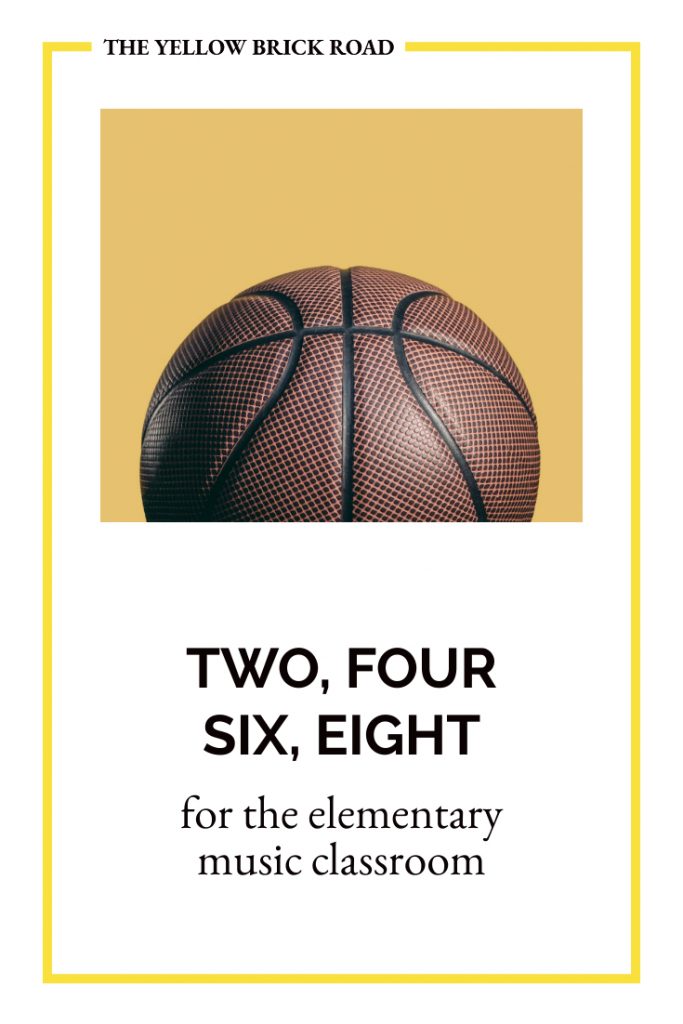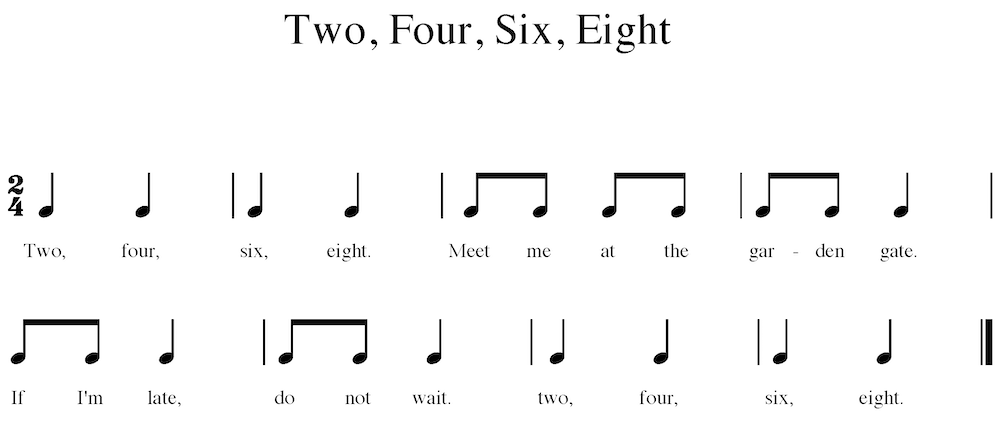Two, Four, Six, Eight is a great speech piece for differentiating beat and rhythm. The piece also provides a great opportunity for collaborating with your resident P.E. teacher, since you’ll need dodgeballs or basketballs for the activity. I would recommend trying this activity with first/second graders and older, as they’re less likely to spend most of their time chasing after a lost ball…
BALL BOUNCING ACTIVITY
- Students sit or kneel (whichever they prefer) in a circle.
- Each time they chant “Two, four, six, eight”, they need to bounce their ball to the beat.
- I suggest starting at 72 bpm and adjusting as needed.
- During the other parts of the piece, they should either be retrieving a lost ball or simply holding it in preparation for the next bounce.
Once the overwhelming majority of students are comfortable (and want to move on) you can add the next challenge.
- Have students bounce the ball to the beat in every measure except, “If I’m late, do not wait.”
- During this portion, students should tap the ball on their legs to the beat. This brief pause will give struggling students a chance to recover and catch up.
STEADY BEAT PRACTICE
It’s important that students have a chance to practice bouncing their balls to a steady beat before trying the speech piece activity. There are two reasons for this:
- Just like with other manipulatives, students need a chance to play around a little first with this exciting new thing, before being expected to focus on anything else. Curiosity is a fantastic thing!
- This practice time will give you an idea of where students are with their dribbling skills. If they struggle to bounce the ball in a consistent way, then that’s a sign that the lesson should be delayed until they’re ready.
HELPFUL WEBSITES FOR TEMPO
I suggest starting at around 72 bpm, but you’ll need to meet your students where they are. The BPM Database is one way to search for songs with a specific bpm. It’s also a great way to search specifically for the artists that you already know your students love. Jog.fm is another great website to find songs with a specific bpm. Lastly, if you have a specific piece in mind, but don’t know the exact tempo, you can find it here.
ADDITIONAL RESOURCES
The Rhythm Chairs Game is another fantastic activity for differentiating beat and rhythm, and it can be used with middle school students as well.
The Basics of Steady Beat is a thorough resource that guides students through real-life sounds, sights, and feel of steady beat. You can download a free sample of this resource here.


